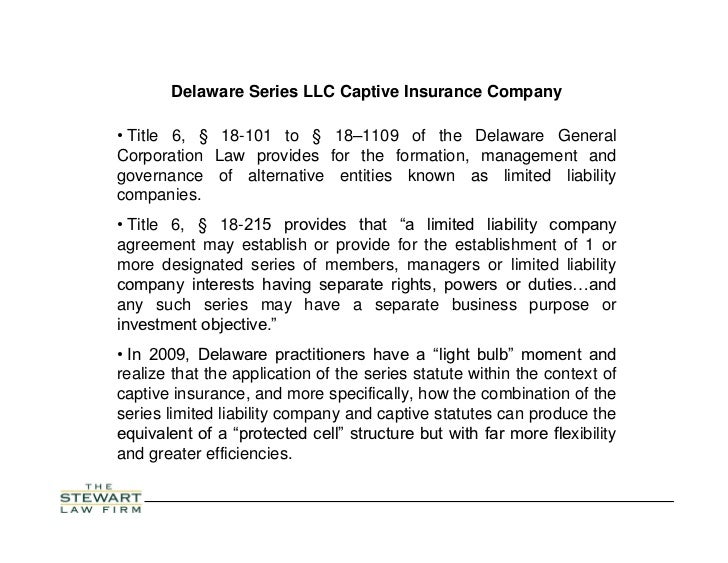Captive insurance, often referred to as self-insurance, is a unique and powerful risk management tool that businesses can utilize to gain greater control over their insurance coverage. By creating their own insurance company, known as a captive insurer, businesses can tailor their policies to fit their specific needs and essentially become their own insurance provider. This approach offers a range of benefits, including cost savings, increased flexibility, and improved risk management strategies.
One particular type of captive insurance that has gained significant attention is the 831(b) captive. Under Section 831(b) of the Internal Revenue Code, small insurance companies with premium income not exceeding $2.3 million can elect to be taxed only on their investment income. This favorable tax treatment, coupled with the ability to provide coverage for related entities, has made the 831(b) captive an attractive option for many businesses.
Additionally, understanding the IRS 831(b) tax code and its implications is crucial in unlocking the full potential of captive insurance. Compliance with the IRS guidelines not only ensures the tax benefits associated with 831(b) captives but also mitigates the risk of potential IRS scrutiny. It is vital for businesses considering the utilization of a microcaptive to work closely with knowledgeable professionals who can provide guidance on structuring and operating the captive in accordance with the tax code.
In this comprehensive guide, we will delve into the world of captive insurance, exploring its benefits, intricacies, and the key considerations for successfully implementing a captive insurance strategy. By the end of this article, you will have a clear understanding of how captive insurance, particularly the 831(b) captive, can be a game-changer for businesses seeking a proactive and strategic approach to risk management. So, let’s embark on this journey to unlock the full potential of captive insurance.
Section 1: Understanding Captive Insurance
Captive insurance refers to a form of self-insurance where a company creates its own insurance company to cover its risks. This alternative risk management strategy allows businesses to gain greater control over their insurance costs and coverage. Unlike traditional insurance, where companies purchase policies from third-party insurers, captive insurance enables organizations to become their own insurers.
One popular type of captive insurance is the 831(b) captive, which is named after the corresponding section of the Internal Revenue Service (IRS) tax code. The 831(b) tax code provides certain tax advantages to qualifying small captives, making them an appealing option for many businesses. By forming an 831(b) captive, companies can potentially reduce their tax liabilities while also gaining access to tailored insurance coverage.
Microcaptives, also known as small captive insurance companies, are another variation of captive insurance. These entities are usually formed by small and mid-sized businesses and offer a range of benefits, including risk management, asset protection, and potential tax advantages. Microcaptives can be an effective tool for managing risks specific to certain industries or business operations.
In the next sections of this comprehensive guide, we will further explore the benefits and considerations of captive insurance, including the potential tax advantages, risk management capabilities, and steps involved in establishing a captive insurance company.
###Section 2: The Benefits of 831(b) Captive Insurance
Captive insurance, specifically the 831(b) tax code provision, offers several benefits that make it an attractive option for businesses looking to manage their risk exposure effectively.
Firstly, one significant advantage of utilizing captive insurance is the potential for substantial tax savings. Under the IRS 831(b) tax code, eligible small insurance companies can receive favorable tax treatment. This includes the ability to exclude up to $2.3 million in net premiums from their taxable income annually. By taking advantage of this provision, businesses can allocate a portion of their risk management expenses towards the captive insurer, resulting in potential tax savings.
Another key benefit of captive insurance is the improved risk management it provides for businesses. By forming their own captive insurance company, businesses gain greater control over their insurance programs, allowing them to customize coverage options to best suit their unique risks and needs. This can result in more comprehensive and tailored insurance coverage, ensuring that potential losses are adequately protected.
Lastly, captive insurance offers the potential for long-term cost stability and reduced reliance on traditional insurance markets. By establishing their captive insurer, businesses can access coverage that may be otherwise unavailable or costly in the traditional insurance market. This increased control over the insurance program allows businesses to better manage costs and avoid sudden premium spikes often experienced in the commercial insurance market.
In summary, the benefits of utilizing captive insurance, particularly under the 831(b) tax code provision, include potential tax savings, improved risk management, and enhanced cost stability. These advantages make captive insurance an appealing option for businesses seeking to protect their assets and manage their risk exposure more effectively.
Section 3: Compliance with IRS 831(b) Tax Code
When establishing a captive insurance company, it is crucial to ensure compliance with the IRS 831(b) tax code. This code specifically addresses the taxation of small insurance companies, such as microcaptives, and understanding its requirements is vital for reaping the benefits of captive insurance.
Under the IRS 831(b) tax code, a captive insurance company must meet certain criteria to qualify for favorable tax treatment. One important requirement is that the company’s annual written premium should not exceed $2.3 million. This limitation aims to distinguish small insurance companies from larger entities that may have more resources and greater capacity.
Additionally, the code mandates that at least 70% of the premiums collected by the captive insurance company should be used for covering the insured risks. This provision prevents the misuse of captive insurance for purely tax-related purposes, ensuring that the company operates as a legitimate insurance entity rather than a tax shelter.
Complying with the IRS 831(b) tax code is fundamental for successfully utilizing captive insurance. By adhering to its stipulations, businesses can take advantage of the tax benefits offered by a captive insurance company while fulfilling the necessary requirements to establish a legitimate and effective insurance arrangement.


